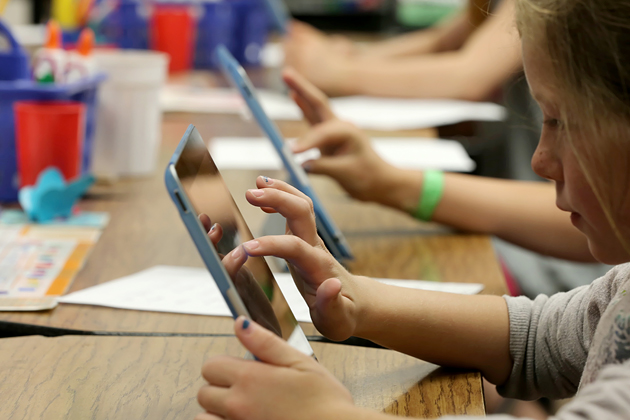
4 Easy Ways To Use Technology In The Classroom
Education is being shaped by various factors, especially, technology. The use of technology in classrooms is picking up pace. Teachers are encouraged to deploy technology in imparting lectures in the classroom. But there are certain teachers who are not fond of technology. They are so used to of traditional ways of teaching and assessment that asking them to employ computers in their habits is an overwhelming job for them.
The internet has penetrated the schools and so have iPads. Students can access the internet in their school premises now, which wasn’t the case some 15 years back. Students didn’t even own mobile phones back then (except a handful few) let alone iPads but now the more and more is being practiced through the use of iPads.
Although these are the current trends that have found their way into the classrooms. How can you leverage technology for maximum effect in classrooms, the steps are listed as under.
Do A Powerpoint Game Show Review:
Teachers who are tech-savvy often employ PowerPoint in imparting lessons and can create ppt. based review games for students such as “Who Wants to be a Millionaire?” The templates on these game shows are available online and can be downloaded.
Teachers can then add their own content and revise it for tailored experience in the classrooms. You can make learning fun by having students practice through a projector and review important points therein and/or material.
Have Students Complete A Written Classroom Activity As If It Was Online:
Have you ever tried to have your students write a diary from the perspective of another character or a famous person? If you haven’t then you should encourage them in creating a blog similar to that online (Blogger and WordPress).
You can refer to the two biggest names in the blogging business and develop a template where your students can pour in their ideas. This way their writing skills will nurture. Other technique could be to have them do a summary on some topic by tweeting it! Isn’t this exciting?! Since tweets have a140-character limit, it will push students to come up with their best-summarized versions.
Now the above steps are not directly employing technology in studies but it is helping in acquaintingstudents with the world of Web 2.0 out there and this acquaintance is one giant leap towards their technology-oriented learning.
Try A Webquest:
A webquest launches students on the path of finding particular information such as they will be asked to act as curators of the museum on any given topic. Their task is to search the internet for finding the artifacts that should belong to the museum and in turn, should explain why they have opted for the said artifact(s). There are already dozens of webquests available online which teachers can tap into for integrating online searches in their syllabus.
Use An Online Grading System:
In some schools, it has become a norm to grade students through an online portal or web-based gradebooks but there is still time before the practice is adopted uniformly everywhere. With this technology, students’ attendance, grades, seating charts and reports can be kept in check.
These stats can then emailed to parents so that a true picture of their children’s progress can be presented to them. This online system inculcates transparency and removes any bias that teachers may have for some students.
Also, students who shy away or hide their report cards from their parents will no longer have to resort to such activities because the real picture is landing right in parents’ inbox.In short, certain ills can be combated with theonline grading system in place.
Above are some ways, by means of which teachers can transform traditional classroom learning to more technology-based experience.
Author Bio: Jessica Paul is an instructor in a leading institute. He writes to educate his audience in the development taking place in the education sector. He can be contacted for buy essay help and for more updates you can follow him on Twitter, Facebook, and Google+.
